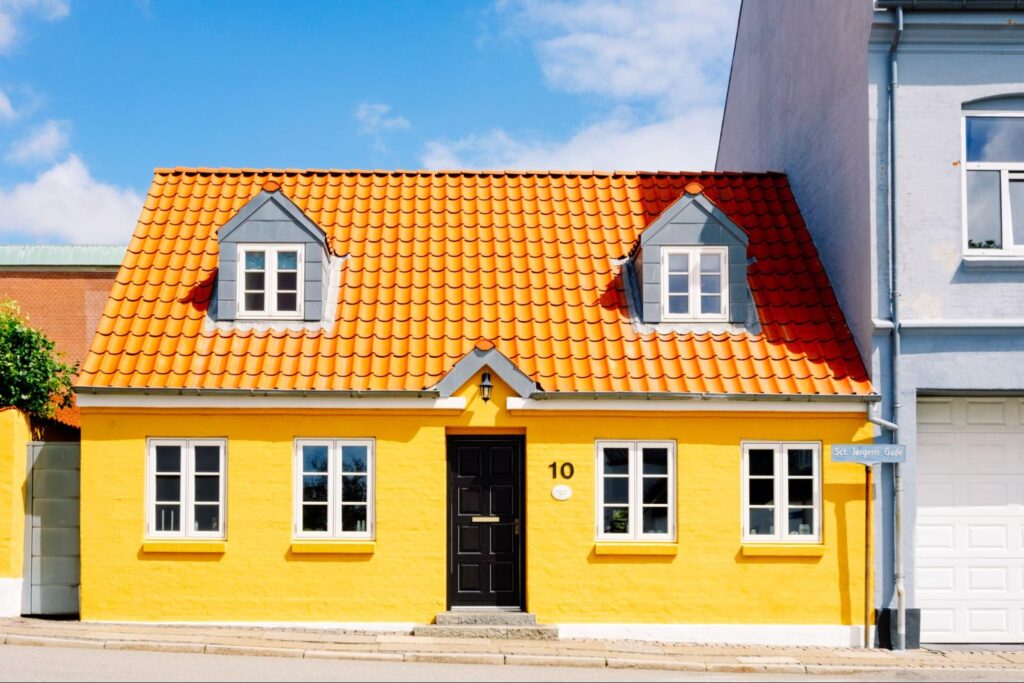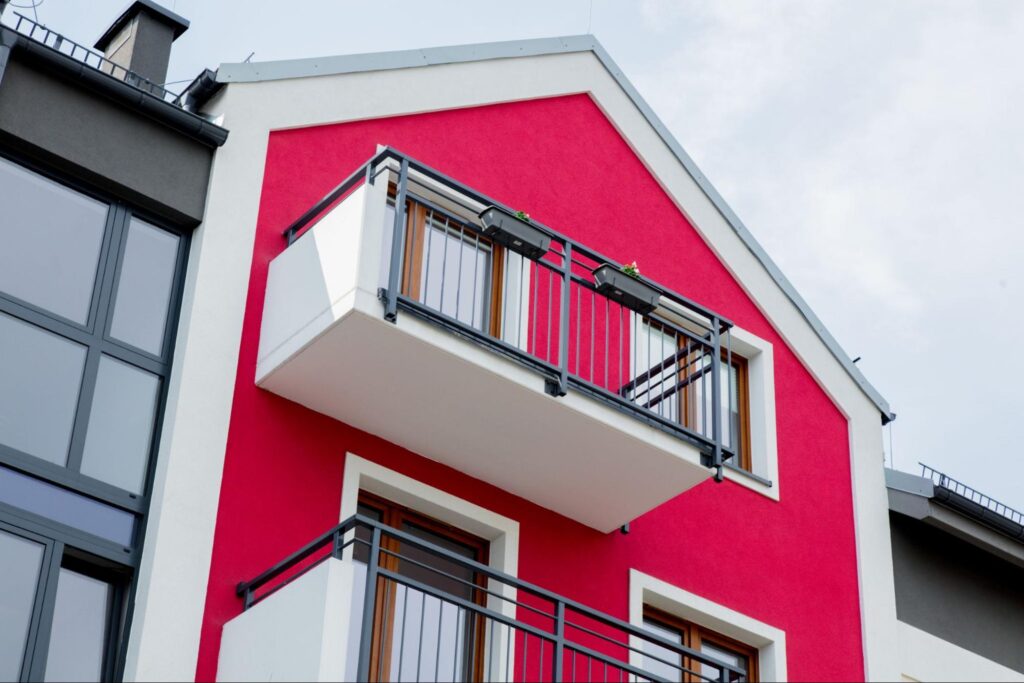
A fresh coat of paint can make your home look brand new. However, the results depend heavily on when you decide to paint. Weather, temperature, and humidity all affect the outcome. Rushing into a project during the wrong season can waste time and money. Choosing the best season can protect your investment and enhance your home’s beauty.
Why Timing Matters for Exterior Home Painting
Exterior home painting is more than picking a color and a brush. The right timing can distinguish between a stunning finish and peeling paint. It matters because the paint requires proper conditions to adhere, dry, and remain intact.
Weather Impact on Paint Application
Paint needs stable weather to adhere correctly to surfaces. Rain, strong winds, or intense heat can ruin even the best work. Too much moisture causes bubbling and peeling. Extreme sun exposure can dry the paint too quickly, leading to cracks. Mild and dry conditions give the best results.
Surface Preparation and Cure Time
Surface preparation is vital for a lasting paint job. Cleaning, scraping, and priming require time and are best done in dry weather. Paint also needs enough time to cure, not just dry. If the surface is damp or cold, curing slows down. Poor cure time weakens the finish and shortens its life.
What to Know About Exterior Home Painting in Spring
Spring offers a tempting start for exterior projects. Days grow longer, and temperatures begin to rise. Yet, spring brings its own set of challenges worth considering.
Advantages of Spring Painting
Spring brings moderate temperatures that help paint settle well. Mild weather improves drying and bonding. Early projects beat the summer rush for contractors. Pollen and rain levels are manageable in many regions. Planning well means enjoying a beautiful summer-ready home.
Potential Drawbacks of Spring Painting
Unpredictable weather can stall progress in spring. Rainstorms, sudden chills, and pollen surges can interfere. Surfaces may stay damp longer, delaying the application of paint. Allergens in the air can stick to wet paint. Spring works best with careful weather monitoring.
Planning Exterior Home Painting During the Summer
Summer seems like the apparent choice for painting projects. The days are warm, dry, and long enough for steady work. Still, it is crucial to weigh the benefits and the risks.
Benefits of Summer Painting
Dry weather allows surfaces to dry quickly after prep. Longer daylight hours mean faster project completion. Paint cures better with consistent warmth. Summer makes scheduling easier with reliable forecasts. Good planning avoids the hottest parts of the day.
Risks Associated With Summer Painting
Intense heat causes paint to dry too fast. Quick drying leads to cracking and uneven finishes. Humidity spikes can surprise even in summer. High temperatures make exterior work harder for crews. Choosing morning or evening sessions helps avoid the worst heat.
Best Tips for Exterior Home Painting During Fall
Fall often brings the best conditions for painting projects. Temperatures cool down but stay warm enough for curing. However, timing becomes more critical as winter approaches.
Why Fall Often Works Best
Fall days bring lower humidity and consistent temperatures. Mild weather creates perfect curing conditions. Painting companies often have better availability after summer. Fall projects finish smoothly without the distractions of spring pollen or summer storms. Finishing before cold snaps is essential.

Things to Watch Out for in the Fall
Shorter days mean less working time daily. Late fall can bring unexpected frosts overnight. Early planning helps beat the first winter storms. Leaves and debris can stick to fresh paint. Closely monitoring forecasts avoids cold-weather setbacks.
Why Winter is Not Ideal for Exterior Home Painting
Winter presents serious challenges for exterior painting projects. Cold temperatures, wet conditions, and shorter days all work against success. Most professional painters recommend holding off until spring.
Temperature and Moisture Issues
Most paints require minimum temperatures to cure properly. Cold air slows or stops the drying process. Snow, sleet, and rain make surfaces too wet for good adhesion. Frozen surfaces cannot be painted safely or effectively. Even “cold weather” paints have strict limits.
Paint Quality and Winter Conditions
Cold temperatures thicken the paint, making the application uneven. Brushes and rollers perform poorly in freezing conditions. Adhesion suffers if moisture sneaks under the paint. Paint layers become brittle and can crack easily. Winter jobs often fall short of the quality of those in warmer seasons.
What Affects the Best Season for Exterior Home Painting
Sometimes, the “best” painting season depends on where you live. Materials, home conditions, and urgency also play essential roles. Knowing these factors helps tailor the perfect plan:
Regional Climate Differences
Some regions enjoy mild winters and scorching summers, while others face rain-heavy springs and cool autumns. Understanding your local climate avoids scheduling mistakes. Southern states may offer winter painting opportunities, while mountain regions might demand fast fall completions.
Type of Paint and Materials Used
Different paints respond differently to temperature and moisture. Some modern paints tolerate wider ranges. Special primers can help paint stick even in tricky conditions. Discussing options with a pro saves time and headaches. Choosing the right products stretches your painting window.
Scheduling and Contractor Availability
Good painters book up fast during prime seasons. Early scheduling locks in the best weather windows. Off-season deals sometimes exist, but they often come with risks. Reliable paint contractors usually guide timing decisions. Trust their expertise when setting your project timeline.

How to Tell Your Home Needs Exterior Home Painting
Even if the weather is perfect, your home must also be ready. Checking for signs early on can save you from costly repairs later. Knowing when to act keeps your home looking its best:
Peeling or Bubbling
Peeling or bubbling paint signals urgent action. Fading or chalky surfaces show weather damage. Cracks in siding or trim invite water damage. Exposed wood must be sealed quickly. Early action prevents deeper structural problems.
Warped or Swollen Siding
If your siding looks swollen or warped, it’s often a sign of water damage. Paint is the first defense against moisture; the material underneath starts to deteriorate when it fails.
Mildew, Mold, or Dark Stains
Black or greenish spots on the paint surface often signal mold or mildew. They suggest that the paint barrier is failing to protect against moisture.
Rust Stains From Nails or Fixtures
Rust streaks on painted surfaces near nails, screws, or metal fixtures show that moisture is penetrating the paint, leading to corrosion underneath.
Visible Wood Grain (in Older Coatings)
If you see more wood grain or roughness showing through painted wood, the paint layer has thinned too much to protect the surface.
Paint Color Fading Unevenly
All paint fades, but uneven fading (significantly lighter patches) usually indicates UV damage. Fading also shows that the paint’s protective binders are deteriorating.
Caulking Deterioration Around Windows and Doors
Cracked, shrinking, or missing caulk lets water seep behind paint layers, which can cause peeling and wood rot. It’s often a hidden sign that painting and sealing are both overdue.
How Modern Paints Impact Exterior Home Painting Timing
New paint technologies have revolutionized the way homeowners approach home improvement projects. Some paints now accommodate a broader range of temperatures and humidity levels. However, season still plays a key role in quality and durability. Understanding the limits of modern paints helps avoid costly mistakes:
Advantages and Limits of New Paint Formulas
Advanced paints dry faster and resist moisture better. Some brands promise curing at lower temperatures than before. Still, extreme heat or cold affects even the best formulas. Professional painters still plan carefully around the season. Good products help, but don’t replace brilliant timing.
Signs of Poor Seasonal Timing in Exterior Home Painting
Not all bad paint jobs happen from poor workmanship. Many failures come from bad seasonal timing during application. Recognizing the signs of a mis-timed project helps you plan smarter. It also saves you from hiring the wrong contractor in the future.
How Weather Mistakes Show Up on Painted Surfaces
Cracks often form when the paint dries too fast in the heat. Bubbles appear if surfaces are wet or humid before painting. Faded or chalky finishes show a poor curing process. Flaking can occur when paint freezes before it has set. Learning these signs helps protect your home’s next paint job.
Why Professional Exterior Home Painting Relies on Seasons
Seasonal planning is a crucial component of every successful home painting project. Professional painters carefully select the optimal time to schedule exterior work. They know seasonal mistakes can damage both appearance and durability. Homeowners benefit when projects respect seasonal patterns.
Why Good Painters Care About the Weather Forecast
Pros refuse to paint if the weather threatens quality. They study daily highs, lows, humidity, and rain chances. Working during bad seasons leads to more callbacks and repairs. Most reliable painters prefer to delay rather than deliver poor work. Their success depends on achieving lasting results, not rushing through jobs.
Plan Your Exterior Home Painting for the Best Results
Waiting for the “perfect” time rarely beats planning for the right time. The season you choose matters if you want your home’s exterior to stand out and stay protected. Reach out to experts who know how to time it right and don’t settle for shortcuts. Start strong, and your home will reflect that pride for years.
For more expert tips on exterior home painting, visit the Euro Painting blog and confidently plan your next project.

